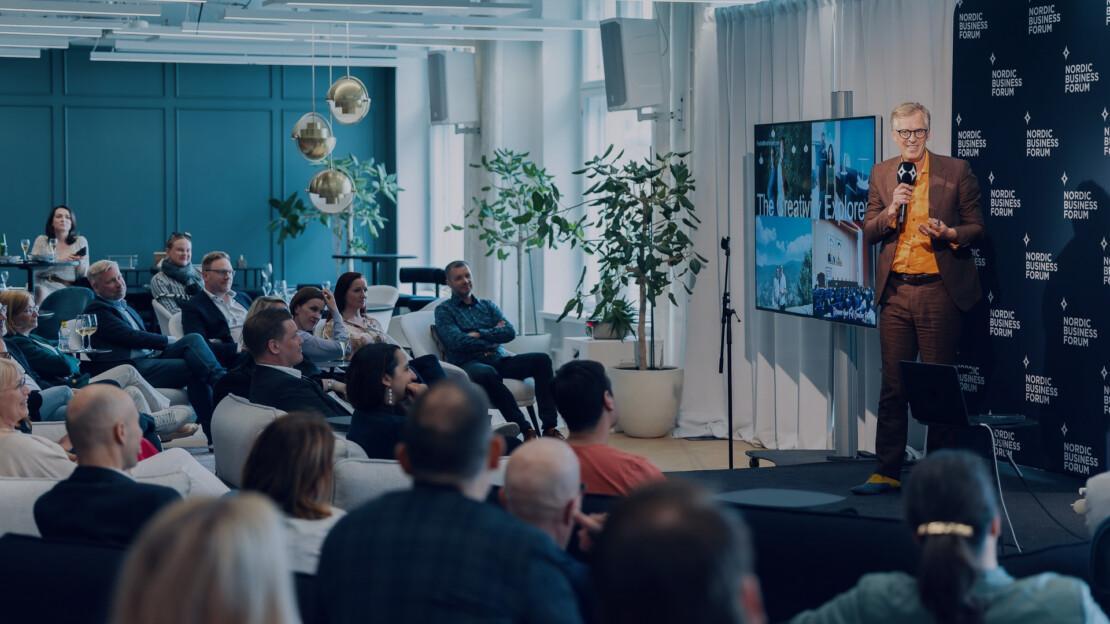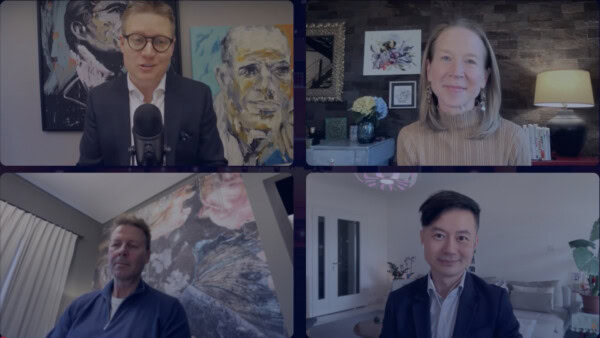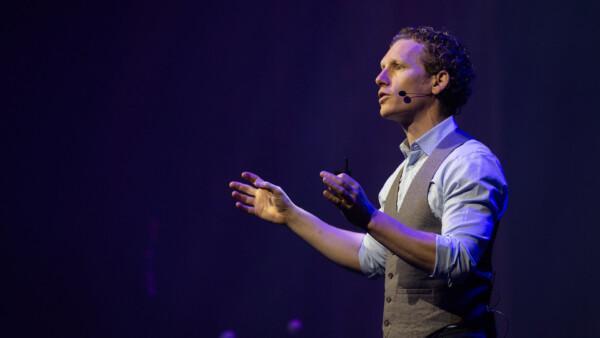22May2025
At our very first NBF Connect session, The Creativity Explorer Fredrik Härén delivered an energizing and unconventional session that broke away from the typical keynote structure—intentionally so. Rather than offering a fixed speech, Fredrik invited the audience to shape the conversation in real time, demonstrating creativity not just as a subject, but as a living, collaborative act.
And that’s the point.
Fredrik challenges the whole idea of being a “creativity expert.” Instead, he embraces the role of an explorer—someone who doesn’t claim to have all the answers but is deeply curious about the questions.
“An expert knows everything. Who wants to listen to someone who knows everything? An explorer, by definition, knows nothing. An explorer only has questions.”
In a world where knowledge is often mistaken for certainty, Fredrik reminds us that it’s not answers, but curiosity, that drives innovation. Here are the key ideas he shared.
Why Process Kills Creativity—and What to Do Instead
In cultures that prize discipline, structure, and efficiency, creativity is often unintentionally suppressed. Fredrik used humorous stories from his travels to make a sharp point: processes are only useful when they support thinking, not when they replace it.
In Singapore, he challenged a bank employee who insisted he walk through a useless queuing system even though no one else was there. In a poolside encounter, he questioned why someone swimming alone still had to follow “the correct direction.”
These examples reveal a deeper issue. We get so comfortable following routines that we stop asking whether they still serve us.
“We’re so stuck in how we do things that we are literally blinded by what we could be doing.”
Are We Born Creative, or Can We Learn It?
Fredrik tackled a common misconception: creativity is something you either have or you don’t. He shared that growing up, he believed he wasn’t creative because he didn’t have perfect pitch like his brother. But over time, he learned creativity is less about talent and more about mindset and effort.
Inspiration, he argued, is not passive—it’s an act.
“Inspiration isn’t something that fills you up like oxygen. You have to play with it. It’s like a ball: if you just stare at it, nothing happens. But if you start interacting with it, everything happens.”
He underlined that everyone has the potential to become more creative. The key is to stop comparing and start engaging.
Events Are for Connection, Not Just Content
As someone who’s spent decades on stages, Fredrik offered a bold insight for event organizers: maybe we don’t need more speakers. Maybe we need more space to connect.
He told the story of Maria Hallander-Lawson, a Swedish HR leader who canceled all the speakers at a company conference the night before it started. Her rationale was that the participants can “talk to the people you never have time to talk to, about the things you never have time to talk about.” The feedback was that it was the “best conference ever.”
Fredrik wasn’t advocating for the removal of speakers altogether—he was advocating for intention. “Human connection is what makes people happy. Not the best speaker, but the best conversations.”
Curiosity Is the Catalyst for Creativity
Fredrik underscored that creativity isn’t a personality trait, it’s a curiosity habit. To illustrate, he shared the story of Frank Stephenson, former head of design at Ferrari and McLaren.
While on holiday, Frank noticed a mounted sailfish behind a hotel reception desk and asked about it. No one knew the story, but instead of letting it go, Frank tracked down the owner, learned the sailfish was the fastest fish in the ocean, and became obsessed.
Later, he had the fish studied in a wind tunnel. The findings of how its body reduced drag ended up influencing McLaren’s car design.
The lesson here is that creative breakthroughs don’t come from knowing the answers. They come from caring enough to ask the next question—and then doing something with what you find.
“Curiosity comes from care. That which you care about, you’ll be curious about. And that curiosity leads to creativity.”
The Nomadic Mindset: Movement as Mental Model
One of Fredrik’s most poetic insights came from a Mongolian nomad. When asked what being a nomad meant, the man responded, “It means we wake up each morning and ask, ‘This was the perfect place to live yesterday, but is it still the perfect place to live today?’”
Fredrik used this as a metaphor for businesses that fail to update their thinking.
“Creativity means a movement of the mind. Just because something worked last year doesn’t mean it’s right this year.”
In a rapidly changing world, staying still is often the riskiest move.
Stop Brainstorming—Start Thinking Differently
In one of the most relatable segments of his talk, Fredrik asked the audience: When do you have your best ideas?
The answers were universal: in the shower, on a walk, in bed, during exercise, while relaxing. Yet most organizations still rely on brainstorming sessions, which often take place under pressure, with lots of people, at work, trying to be creative.
“Brainstorming is the opposite of when we actually get ideas.”
Instead of brainstorming solutions, Fredrik recommends spending more time defining the problem—asking better, deeper questions that allow the subconscious mind to go to work.
Key Points:
- Rigid processes can block innovation—especially when left unquestioned.
- Everyone is creative. Inspiration is an action, not a waiting game.
- The most successful events create meaningful human connection.
- Curiosity is the foundation of creativity. Ask more questions and care more deeply.
- Creative organizations don’t just change tools; they change mindsets.
- The best ideas often come when we’re not trying to have them.
Questions for Reflection:
- What routines or processes are we following just because “that’s how it’s always been done”?
- How might we facilitate deeper connection, not just information transfer?
- What’s one curiosity you’ve had recently and did you act on it?
- Are we willing to let go of what worked yesterday to find what might work better today?
- How can we encourage creativity not through pressure, but through space and trust?

 by:
by: 
